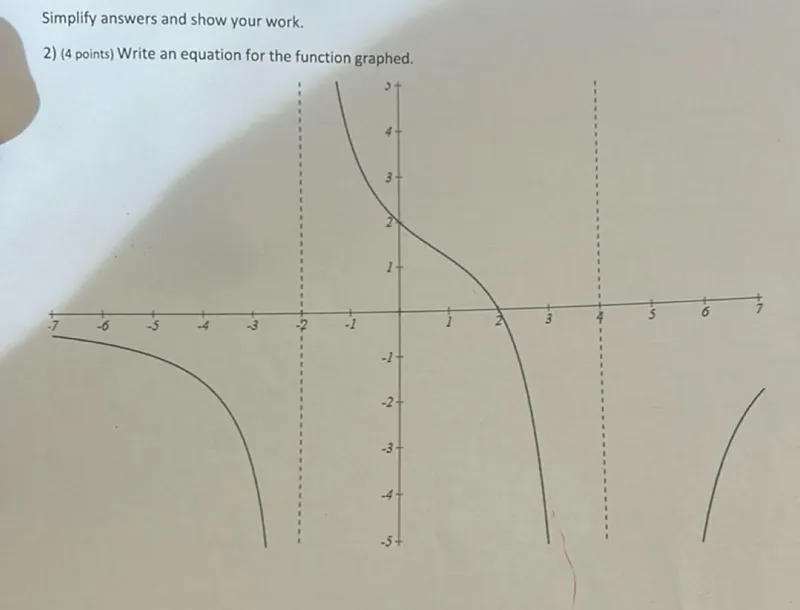Write an equation for the function graphed.
Find the vertical asymptotes.
The vertical asymptotes are at \(x = -2\) and \(x = 4\).
Find the horizontal asymptote.
The horizontal asymptote is at \(y = 0\).
Determine the general form of the equation.
Since there are two vertical asymptotes and a horizontal asymptote at \(y=0\), the general form of the equation is
\[y = \frac{a}{(x - h)(x - k)}\]
where \(h\) and \(k\) are the vertical asymptotes and \(a\) is a constant.
Substitute the vertical asymptotes into the general form.
\[y = \frac{a}{(x - (-2))(x - 4)} = \frac{a}{(x + 2)(x - 4)}\]
Find the value of \(a\).
The graph passes through the point \((0, 2)\). Substitute this point into the equation:
\[2 = \frac{a}{(0 + 2)(0 - 4)}\]
\[2 = \frac{a}{-8}\]
\[a = -16\]
Write the final equation.
The equation is
\[y = \frac{-16}{(x + 2)(x - 4)}\]
\(\boxed{y = \frac{-16}{(x+2)(x-4)}}\)
\(y = \frac{-16}{(x+2)(x-4)}\)






